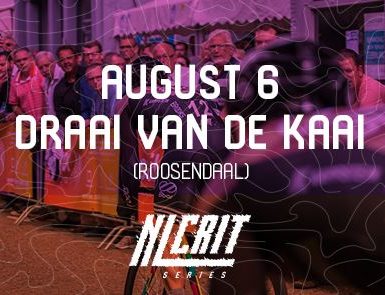Race weekends are over in the blink of an eye. The race ends, and it’s on to the after party. After a flight home and a few loads of laundry, life returns to normal pretty quickly for most of us, but for the photographers of Red Hook Crit, the work is only just beginning. Join FGC behind the lens with some of the photographers of Red Hook Crit in a new series dedicated to the talented few that capture the pain, the fear, and the joy of fixed gear racing.
Photography: Chiara Redaschi
Text: Sarah Bartlett

I haven’t met Chiara Redaschi in person, but I feel like I know a piece of her heart just by looking at her photography. Even a quick browse of her website reveals that she sees the world, and the people and places around her, in an unbelievably unique way. Her website says it best, “My photos will show you the way I see this world.”
“I am not a good writer,” Redaschi begins when I ask her about her photography. “If I have to put a caption, I just put the race name. I want the picture to talk.” From the moment we begin discussing photography, it becomes very clear that her only goal is to capture emotion. “You see the picture, and you have to feel something – the feeling that I felt when I took the picture. Maybe you got another feeling,” says Redaschi. “I just want to show my view of the world and what I feel in that moment. For me, it’s really simple.”

Redaschi is one of the many talented photographers that travels from around the world to shoot Red Hook Crit (RHC). Perhaps the most fascinating part of the photography of RHC is that 100 photographers could take photos, and the end product would be 100 entirely different perspectives on the day, and Redaschi’s perspective is certainly fascinating.
“You can see so many different stories. I can see something and another photographer can see some of the things that I miss, so you get a global view of the race,” Redaschi says about RHC. “If you have a bad camera or a good camera it doesn’t matter. It matters the eyes that you have. Maybe technically it’s not a good photo, the white is not correct, or the technical stuff, but it doesn’t matter. If you feel something from the photos, then that’s everything.”
One of Redaschi’s most emotional photos was taken this year at RHC London No. 3. “I took a photo of a racer in London that broke his shoulder. I was like ‘I can’t take a picture in this moment’,” Redaschi says. “We were watching the guy and the girlfriend, and it was so deep. I don’t know why, but I took my camera and took the photos.”

The photo is one of the most raw and emotional photos I have seen from RHC, and Redaschi agrees. “I really love that photo. I usually don’t like my photos. But that photo is the kind of photo I want to take. Rude photos.” Redaschi calls it rude. I call it honest. And it’s beautiful.
Redaschi chose to share the photo in black and white. “I love black and white, and every time I think I am going to do everything in black and white. You can see the essential. In the black and white, you have to keep attention to the feeling and emotion because there is nothing else.”

Redaschi attended her first Red Hook Crit in 2012 and has been shooting the race since 2014. “I get really stressed when I go to a race. I always think ‘What am I going to do now?’ or ‘Can I get something different this time?’” Redaschi says when I ask her what her greatest challenges are shooting RHC. “The location is always the same, but the moments are different. I try to think different. If last year I went to this corner, this year I will try a different corner.”
During a typical Red Hook weekend, Redaschi will take between 2,000-3,000 photos. For the race, she uses a Canon 5D Mark II, but when she’s off the clock, enjoying the after party and riding around the city, Redaschi trades in her digital camera for something a little more old-school. “I use the digital camera for the race and for the job. And I have a Kodak disposable for fun stuff. I can print that, and it’s a good memory,” she says. “The film you can print and touch and it’s like you are in the picture.”

It’s not long into our conversation that I realise that growing up; it wasn’t a matter of if Redaschi would have become an artist, but when. Her father and uncle were photographers, and Redaschi attended art school earlier in life, but it wasn’t until a bit later that it all clicked for her. “Something changed,” she says. “I went to Paris fashion week and I thought, ‘this is going to change my life.’”
Ever since that moment in Paris, Redaschi says she now views everything around her in a different way – the light, the texture – whether she is at the train station or the beach, she is looking for the perfect shot. “I love the light during the sunset,” she says. “I like freaking out for that light. Every time, I stop and look and need to take a photo.”

Redaschi’s instincts are incredible, a true example of her ability to see the feeling in a fleeting moment and capture it. The very thing that makes Redaschi’s photography so brilliant is also the thing that she thinks she needs to work on the most to achieve her dream job. “I want to do photo journalism in a war area. It’s a tough job, but it’s really my dream job,” she says. “I am not prepared now. You have to really be brave and without a soul, and take the shot. You can’t miss the shot. You have to be cold.”
Her passion for sharing the human emotion of war begins with her grandmother, who is now 98 years old. “I grew up with my grandmother, and she was about 23 years living in Italy when it was the second war. And I grew up with all the stories about the second war. I have all these stories in my mind and I want to shoot this kind of story. My grandmother told me they kept hiding this guy in the basement for months. It is devastating, but the war can also show you to be kind to the people you don’t know.”

Redaschi’s desire to capture humanity at its most vulnerable moments, or even at the very moment of death, is remarkable. “I want to show how life is, because this is real life,” she says.
For now, Redaschi is happy travelling, shooting street photography, fashion, and continuing to see where cycling photography can take her. This year, cycling took Redaschi to the Giro d’Italia where she was almost hit by a rider from Astana during Stage 15 in Bergamo. “We were in a spot where usually you can’t stay there but I went there anyway,” she says laughing. “And there was a rider from Astana. And I just turned myself at last moment. I don’t know how I did. When I came back home and looked at the picture I was like ‘oh my God I got the shot!’”

The UCI World Tour is certainly a different world than Red Hook Crit, and Redaschi was initially nervous to shoot the Giro. “I was freaking out. In the crits, we are a family. But at this kind of event, it was my first time, and you don’t know. It’s like a first date,” she says.

Redaschi has plans to return to the World Tour in 2018, with her eyes set on the Tour de France, but says her favorite race will always be Red Hook Crit. “I love Red Hook. It’s my second home because it’s like Christmas every time. You are with your world family again, laughing, eating together, drinking together, sharing the drama. Family drama!” She leaves me with a laugh and we promise to meet up in Brooklyn when the family is back together once again.

From left to right
Top row Jason (@fwdbound), Francesco (@strict) and Eloise (@eloisemavian) who form @tornanti_cc and Caro @caropaulette
Bottom row Chiara (@chiara_redaschi) and Paul (@gingerbeard_photo)




